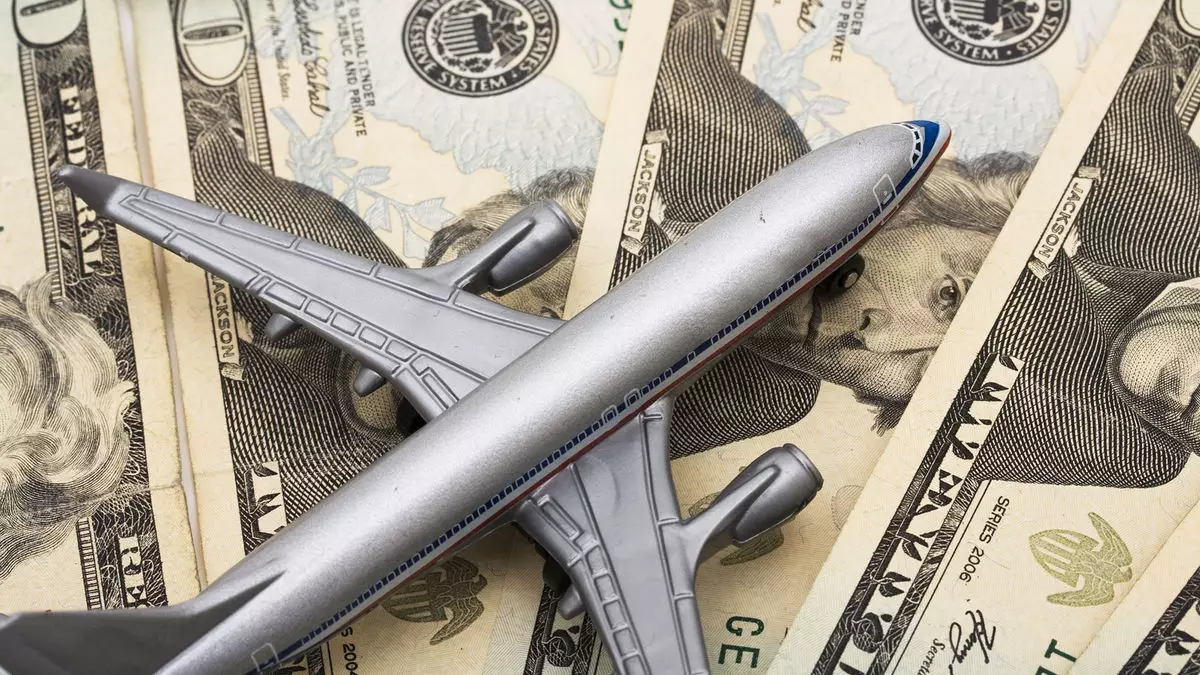The airline industry is currently navigating complex trends that are shaping airfare prices for travelers. As we move into 2025, consumers looking to book domestic flights may find themselves facing steeper prices compared to the previous year. Conversely, international travelers, especially those eyeing long-haul destinations, might discover a more favorable pricing landscape. This article aims to unravel the underlying factors that are influencing the airline fare structures across the board.
Current data indicates that domestic airfares are projected to increase as we head into the first half of 2025. December’s Consumer Price Index painted a concerning picture, revealing a 7.9% increase in airfares year-over-year, with a notable 3.2% jump observed from November to December alone. According to the Airlines Reporting Corporation (ARC), the average roundtrip domestic ticket price reached $561 in December 2024, reflecting a 4% increase from the previous year. Such trends are prompting concerns among frequent flyers and deal-seekers alike.
Hopper, a ticket pricing app, has expressed that for those actively hunting for the best deals, it might be wise to shift focus towards long-haul travel opportunities. The analysis from Hopper’s lead economist, Hayley Berg, indicates that deal-seekers can expect domestic ticket prices this January to be around 12% higher than in the same time frame last year. This trajectory is expected to not only continue but escalate, with predictions of 19% higher fares by May and an additional 12% increase in June.
One primary contributor to this situation is the shrinking capacity of U.S. airlines, particularly in the low-cost sector. Data from early January suggests that domestic capacity has only increased by 0.7% compared to January 2024. The decrease in capacity is significantly noticeable among discount carriers, which are experiencing a notable 4.7% reduction. Major airlines like Spirit, Southwest, and JetBlue have contributed to this decline, resulting in fewer low-cost travel options for consumers.
Berg highlights that capacity cuts from low-cost carriers have a cascading effect on ticket prices. Historically, when these airlines expand their routes, airfares tend to drop by around 20%, yet the reverse is expected when they begin to withdraw from certain routes. The implications for budget-conscious travelers are clear—fewer low-cost flights could lead to a tightening of options and increased prices in various travel markets.
Consumer demand for travel remains robust, with a recent Hopper survey indicating that 76% of Americans plan to spend equal to or more than they did in the previous year on travel. This rising demand, coupled with strained airline capacity, essentially fuels the upward pressure on airfares. The anticipated growth in domestic air travel—estimated to increase by roughly 4.7% by June—contrasts sharply with the persistent stagnation within the low-cost segment, which is projected at less than 1% growth.
In addition to these dynamics, logistical delays at Boeing and supply chain issues affecting engine manufacturer Pratt & Whitney have hindered capacity expansion, further complicating the picture for airlines desperately attempting to meet consumer demand.
While domestic flyers face increasing airfare prices, the scenario appears different on the international front. Reports indicate a decrease in international airfares—approximately 4% down from last year—thanks in large part to increasing competition among international carriers. Travel expert Katy Nastro pointed out that while domestic deals may be scarce, international opportunities, particularly to Asia, are worth exploring. Countries like Japan and South Korea are seeing capacity increases, which may present favorable airfares for travelers.
As international routes become increasingly competitive, there are also signs of stability in European travel markets. This context suggests that while domestic airfare will likely remain high, savvy travelers seeking international destinations may discover more affordable options that could mitigate the pain of rising domestic costs.
Travelers must remain vigilant and adaptive to the shifting landscape of airfare pricing. While domestic flights may become increasingly prohibitive, there remains a silver lining for those looking abroad—a vibrant international travel market ripe with competitive pricing opportunities.


Napsat komentář